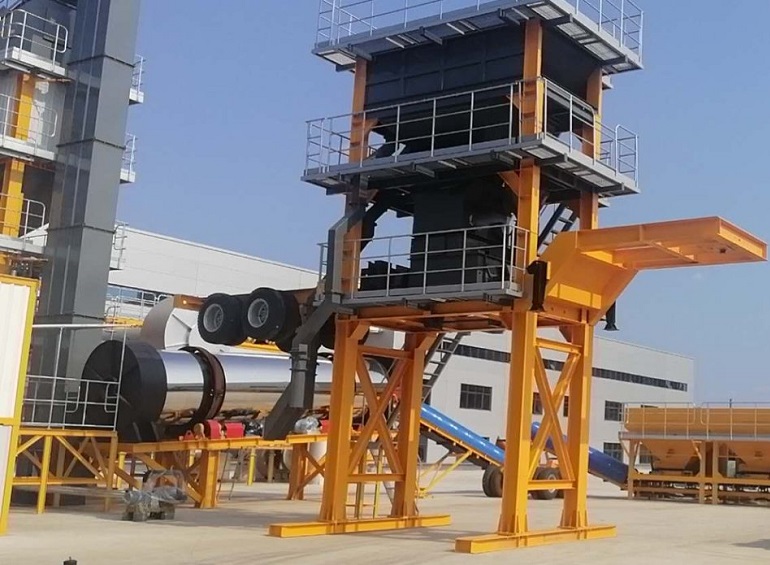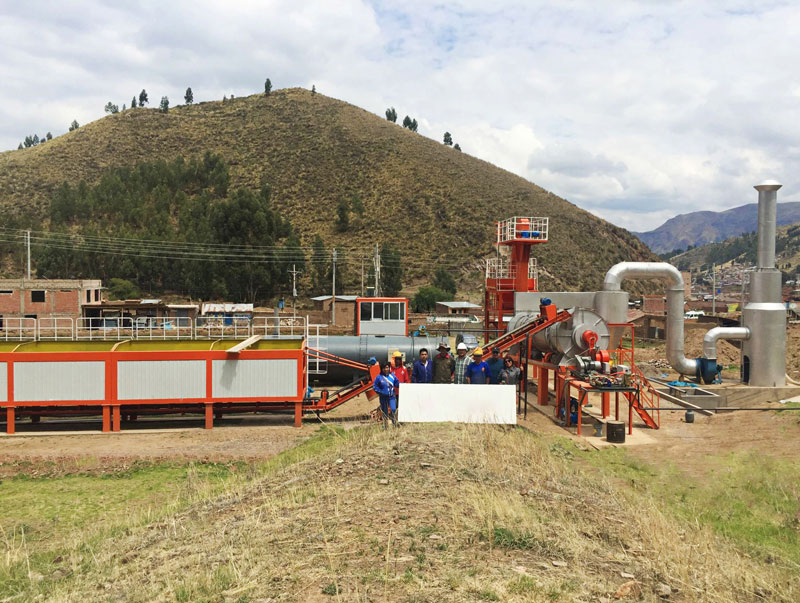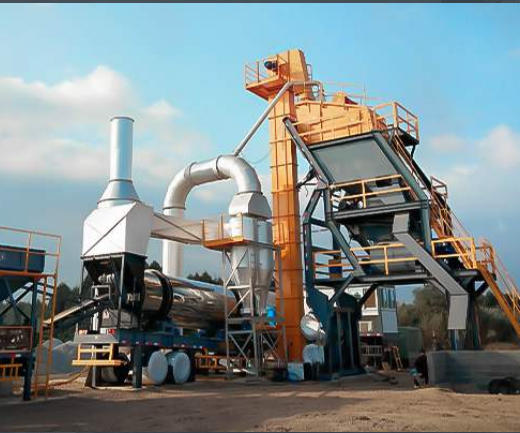Improvement of heating oil heating system in asphalt mixing station
An original LB2000 asphalt mixing plant, which was used for one year, produced asphalt concrete in the morning when the temperature was low in October in the north. As the asphalt circulation pump and spray pump could not run, the asphalt in the asphalt scale solidified, which eventually led to The asphalt mixing plant cannot be produced normally.

1. There is a problem
After inspection, the thermal oil furnace is working properly. When checking the asphalt circulation system, it was found that the temperature of the asphalt delivery pipeline did not meet the requirements, which caused the asphalt in the pipeline to solidify.
The analysis believes that there are four reasons for this result:
One is that the high-level oil tank of the thermal oil is too low, resulting in poor circulation of the thermal oil;
The second is the eccentricity of the inner layer of the double-layer tube;
The third is that the thermal oil pipeline is too long; the fourth is due to
No thermal insulation measures are adopted for thermal oil pipelines. The heat transfer oil high-level oil tank is less than 3m from the ground, and the highest point of the heat transfer oil circulation pipe is 5m from the ground. When the asphalt mixing plant is finished, due to the height difference, the heat transfer oil in the high-level circulation pipe will all return to the high-level oil tank of the heat transfer oil, and a large amount of air will enter the heat transfer oil circulation pipe. When the asphalt mixing plant is working again, the heat conduction oil circulation pump cannot completely exhaust the residual air in the heat conduction oil circulation pipe at a high place, thus forming an air resistance, thus causing the heat conduction oil to circulate smoothly and affecting the heating effect. The asphalt conveying pipe of the asphalt mixing station adopts a double-layer pipe structure, that is, the outer layer pipe is heated by heat conduction oil, and the inner layer pipe conveys asphalt.
After dismantling the asphalt conveying pipe, it was found that the inner layer pipe of the double-layer pipe was eccentric because the inner layer pipe was not welded to the center of the outer layer pipe when making the double-layer pipe. At the flange of the asphalt delivery pipe butt joint, the joint of the heat transfer oil connecting pipe is just welded to the side where the gap of the eccentric pipe is small, thereby causing the flow of heat transfer oil at the joint to decrease. The residual welding slag and impurities produced in the asphalt conveying pipe are deposited in the small gaps at the eccentricity, which causes the flow rate of the heat transfer oil at the joint to decrease sharply, which leads to a decrease in the heating efficiency of the heat transfer oil to the asphalt conveying pipe. If the heat conduction oil pipeline is too long, the pressure at the end of the heat conduction oil pipeline will be insufficient, and the heat conduction oil at the end of the pipeline will cool too quickly. When the ambient temperature is low, the heat conduction oil pipeline does not adopt heat preservation measures, which will increase the heat loss of the heat conduction oil.
2. Improvement measures
Based on the above analysis conclusions, the following five transformation measures have been made for the thermal oil heating system of the asphalt mixing plant:
(1) Increase the height of the oil tank, increase the height of the heat transfer oil high oil tank to 6 m from the ground, so that the minimum liquid level of the heat transfer oil oil tank is not lower than the highest point of the heat transfer oil pipeline of the asphalt mixing station, so that all heat conduction The oil pipeline is always filled with thermal oil to avoid the formation of air resistance.
(2) Install the exhaust valve
Install an exhaust valve at the highest point of the thermal oil pipeline of the asphalt mixing station to completely exhaust the air in the thermal oil pipeline. When the heat conduction oil circulation pump is started for the first time, the valve of the exhaust valve needs to be opened to exhaust the air in the pipeline. When the heat conduction oil flows out of the exhaust valve, the valve of the exhaust valve is closed.
(3) Trim the conveying pipe
Renovate and make the asphalt delivery pipe so that the two-layer pipeline is concentric, and remove the welding slag and impurities deposited in the pipeline.
(4) Install booster pump
At the end of the heat conduction oil pipeline of the asphalt mixing station, a booster pump (centrifugal heat conduction oil pump) that facilitates the circulation of the heat conduction oil is added, so that the end of the heat conduction oil pipeline can also obtain a higher pressure, thereby effectively speeding up the heat conduction oil heating system cycle.
(5) Install insulation layer
Add an external thermal insulation layer to all asphalt transportation pipes and heat conduction oil pipes to reduce the heat loss of the asphalt transportation pipes and heat conduction oil pipes. The thermal insulation layer is made of industrial asbestos and is wrapped around the asphalt conveying pipe and the heat conducting oil pipe.
3. Improve the effect
After the above five improvements, the temperature of the asphalt circulation system and asphalt spraying system of this asphalt mixing plant of our company reached the requirements, the asphalt in the asphalt pipeline no longer solidified, and the asphalt circulation pump and asphalt spraying pump operated normally. At the same time effectively reduce production costs.



 RU
RU MM
MM AR
AR




